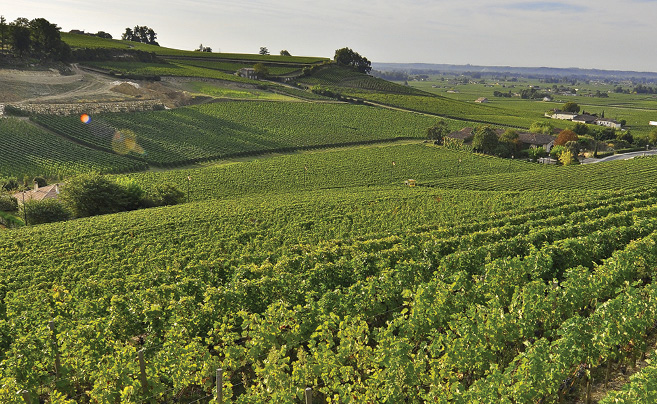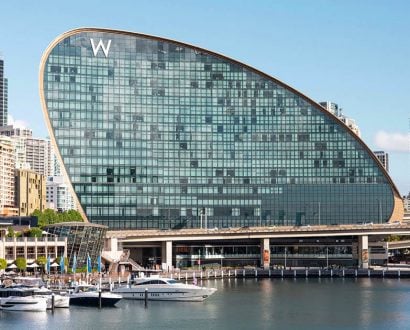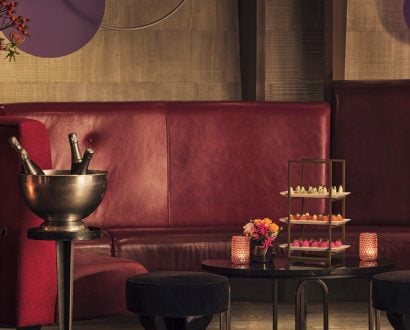Forty kilometres out of Bordeaux at the market town of Libourne, you slip across the lazy, swan-paddled Dordogne River. Houses and convenience stores peel away and rolling countryside appears, stitched together with rows of vines and topped by the needle spires of churches. To your left, the Church of St John sits on a rise in Pomerol village like an exclamation mark announcing the pleasures of the vineyards beneath.
Pomerol is a legendary name hereabouts. So is Pétrus, Vieux Château Certan, and Cheval Blanc, all labels that any lover of wine longs to try — though perhaps just once or twice, given the prices they command. Driving through the vineyards feels as if you’re falling Alice-like into a land of legends: the Hollywood of wine country in the days when Hollywood still had class and mystique. Not that time stands still, though some of the wine villas are baroque beauties. The cellar at Château La Dominique has a shiny red façade designed by Jean Nouvel, and Château Cheval Blanc is a twisted alien spaceship in white concrete.
You don’t have to be a wine connoisseur to appreciate its charms. It has everything a good French town ought to have: cobblestones and cloisters; chocolate shops and dozing cats
A three-litre bottle of 1945 Cheval Blanc merlot from Saint-Émilion’s vineyards sold in San Francisco in 2006 for a record US$135,125. Cheval Blanc and other local label Pétrus consistently rank among the world’s most expensive wines.
At the heart of it all is Saint-Émilion, not just a notable wine appellation but a delightful hilltop town, elegant in golden limestone against a background of dark green vines. You don’t have to be a wine connoisseur to appreciate its charms. It has everything a good French town ought to have: cobblestones and cloisters; squares filled with cast-iron café tables under the shade of plane trees; chocolate shops and dozing cats. It has gourmet restaurants such as creative Le Clos du Roy and Logis de la Cadène, whose truffle risotto is indulgent perfection. Les Belles Perdrix restaurant just outside town bagged a Michelin star this year and has a gorgeous setting in a grand cru vineyard. And of course, Saint-Émilion has wine merchants, some of which are one-stop shops that bring together the region’s vintages. Comptoir des Vignobles offers dégustations of palate-tingling delight and has a full collection of top wines from 1945 onwards; some retail for thousands of euros.
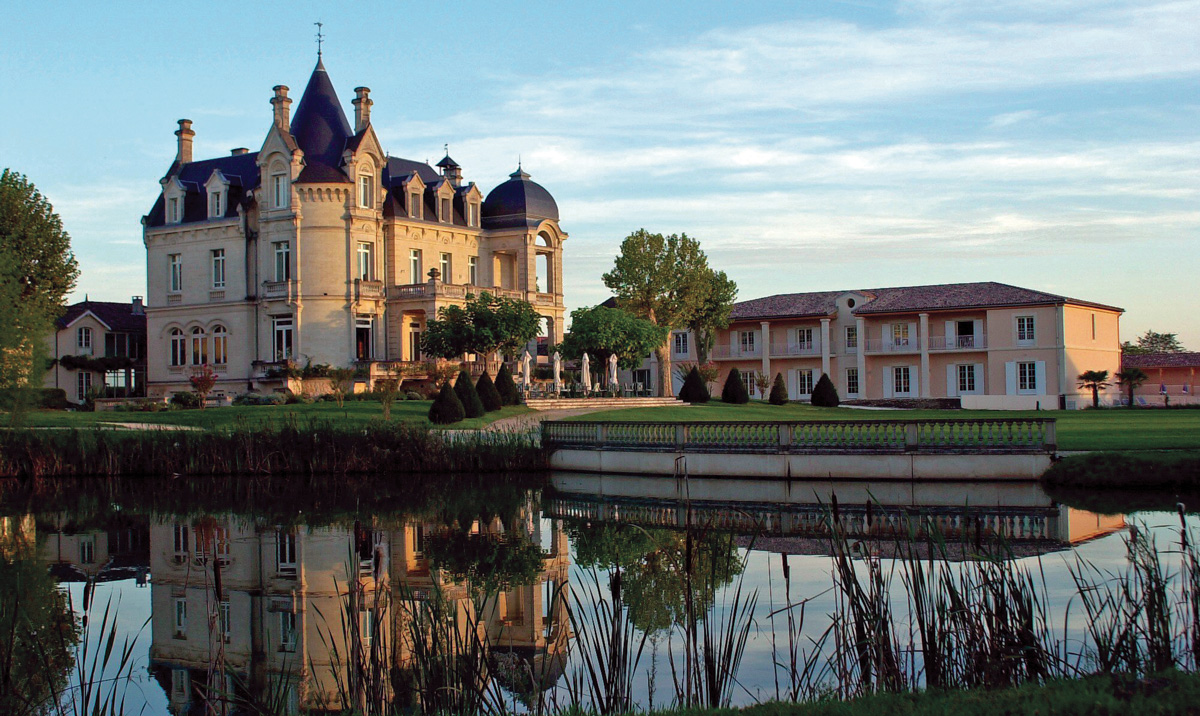 Château Grand Barrail hotel outside Saint-Émilion
Château Grand Barrail hotel outside Saint-Émilion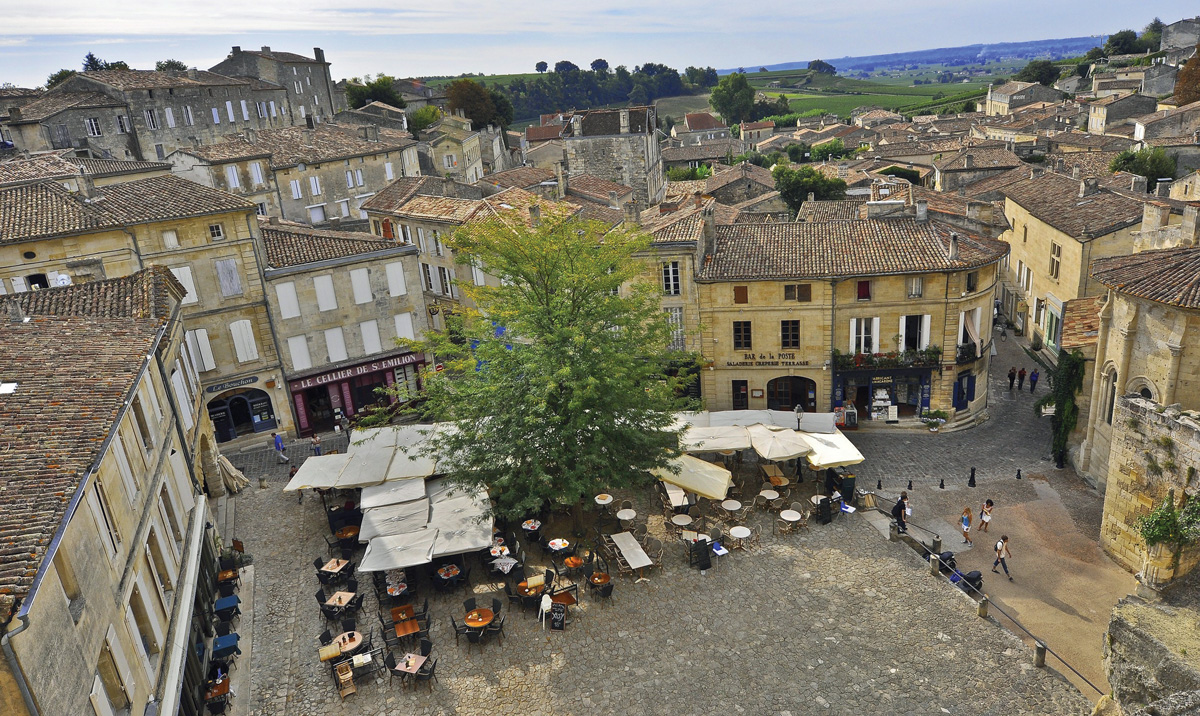 lace du Marché in Saint-Émilion old town
lace du Marché in Saint-Émilion old town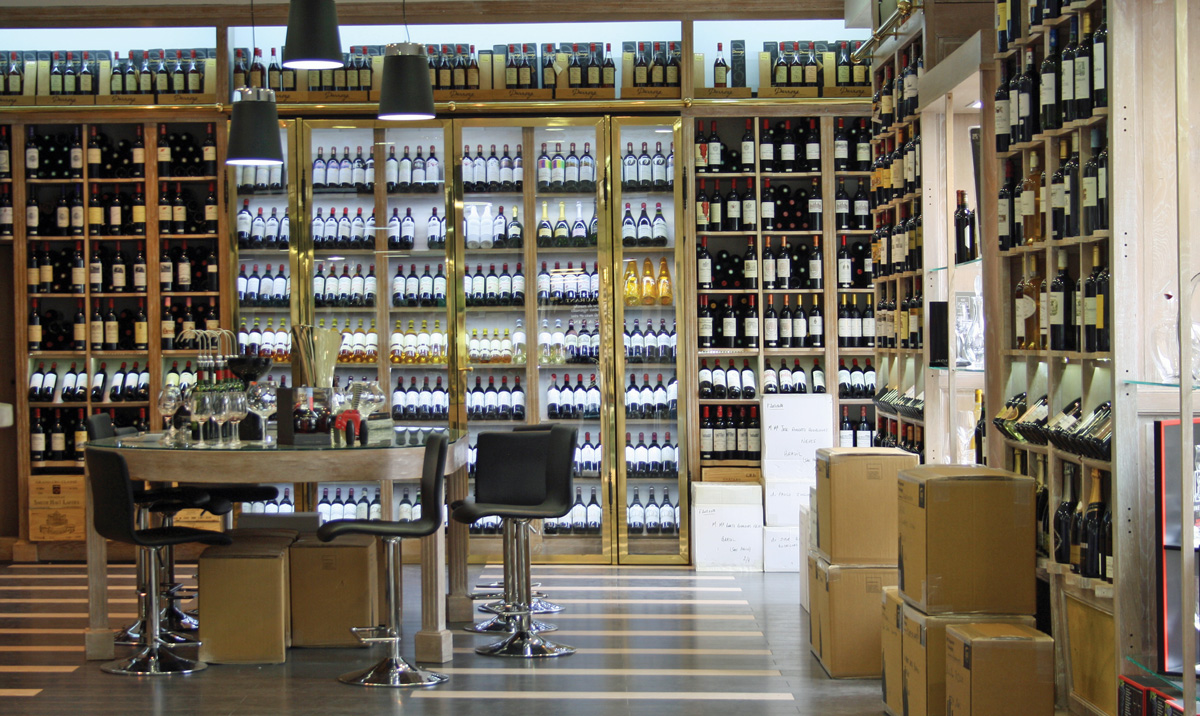 La Grande Cave wine shop in Saint-Émilion
La Grande Cave wine shop in Saint-Émilion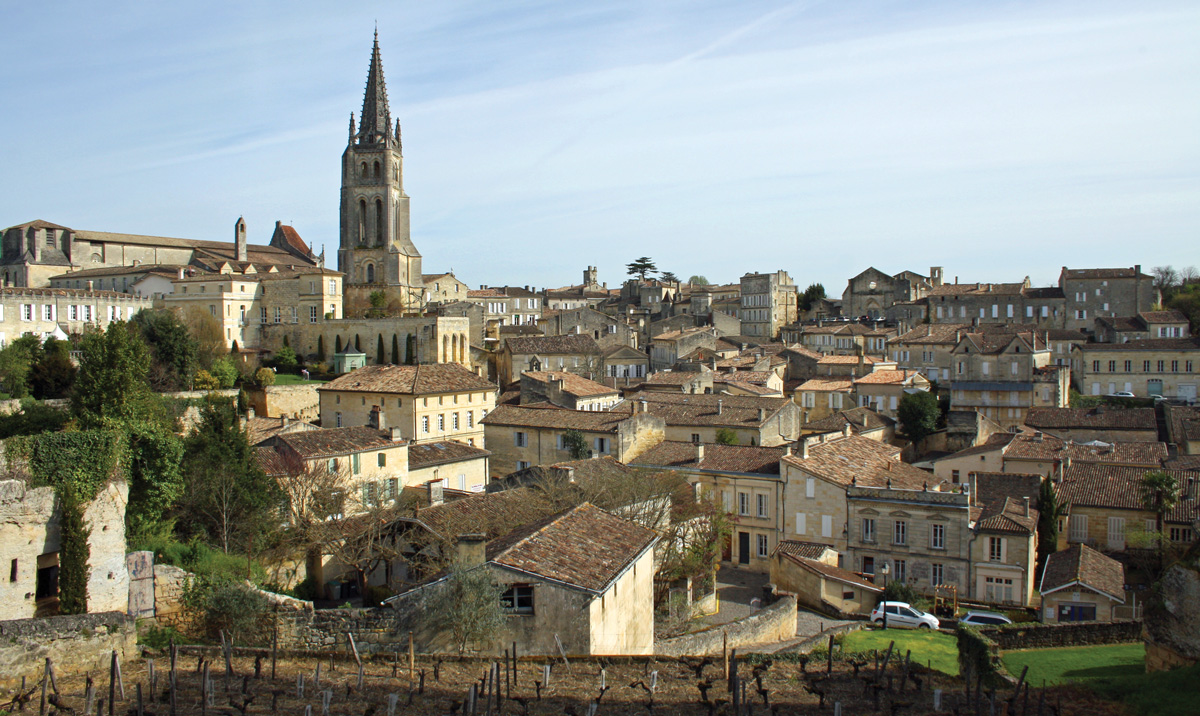 Saint-Émilion old town
Saint-Émilion old town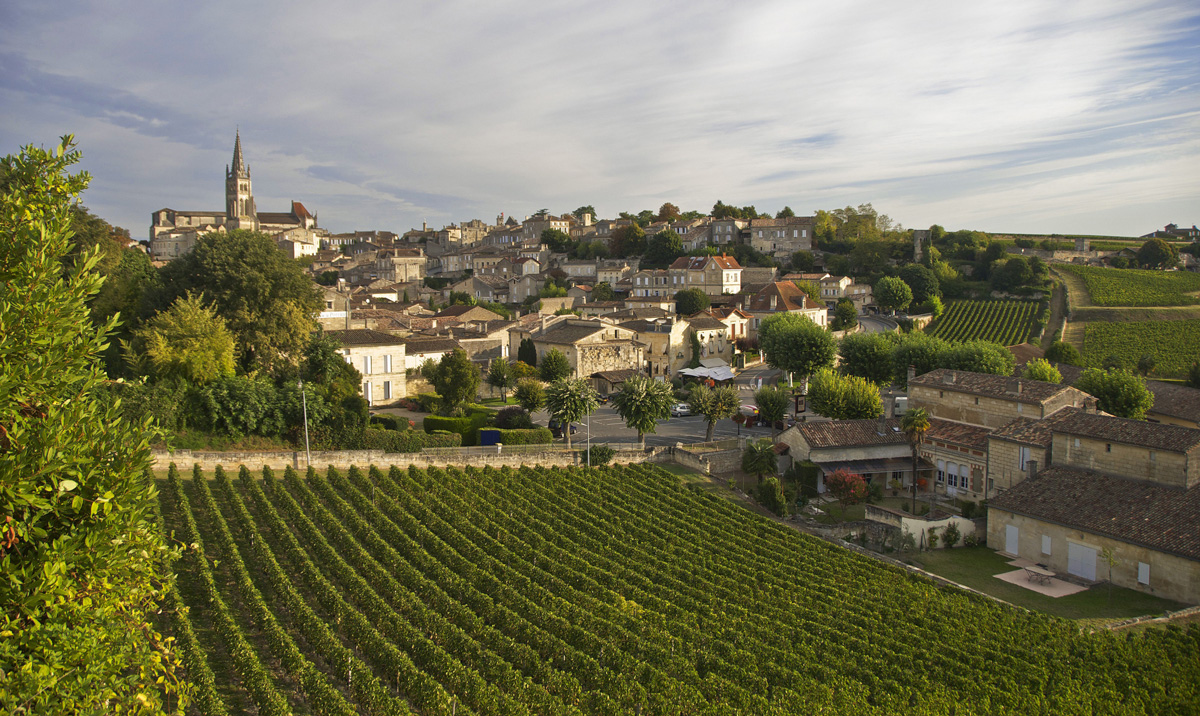 Vineyards below the old walls of Saint-Émilion town
Vineyards below the old walls of Saint-Émilion townSaint-Émilion is World Heritage listed, and not just for its wine pedigree. History rises in layers from the eighth-century catacombs where Saint-Émilion’s eponymous saint once lived, up shop-lined alleys and flights of steps before culminating in a cloud-scraped church whose gravelled terraces supply views over red roofs and wine country. A bench here is just the place to nibble on a macaron, a Saint-Émilion speciality, soft and golden as the limestone from which the whole town is built. Then clamber up the bell tower or the castle keep and you can see Pomerol’s church once more across six kilometres of undulating vineyards.

A tasting here is interesting because it might offer you three merlot-cabernet franc blends, all from the same grapes and year and yet grown on different terroir
The region’s châteaux — which means wine estate hereabouts — are surprisingly small, and the most famous can understandably be reluctant hosts unless you reserve in advance for a private grand cru tasting and tour of the vineyards and cellars, best organised through a local tour company or wine store. Some, such as legendary Château Cheval Blanc, are only open to wine professionals. There are, however, plenty of more modest, visitor-oriented properties for those who prefer a less premeditated experience. One of these is Château Siaurac, with its English-speaking owner Paul Goldschmidt, whose wife’s family has lived here since the downfall of Napoleon. “We have a beautiful château, a garden, three vineyards, and many marvellous trees, how lucky we are! And we should share our wine,” he says, “imagine if Mozart had kept his music all to himself.”
Paul will show you around the three vineyards at Château Siaurac, some of whose vines were planted seventy years ago before the infamous great frost of 1956 hit the region.
Across his boundary stream lies Pomerol, whose land is stratospherically expensive and now
owned by large corporations.
Paul is talkative and amusing, saying: “The life of a wine barrel is sad, after two years we send them to Belgium, where they are cut in half for flowerpots.” But informative too, explaining the strict controls imposed on the famous wine region’s viticulturists, and the vagaries and benefits of the weather — 2009 and 2010 were particularly fabulous years. A tasting here is interesting because it might offer you three merlot-cabernet franc blends, all from the same grapes and year and yet grown on different terroir, and consequently strikingly varied in taste. The estate’s clay soils provide blackberry-cherry tones, the south-facing limestone more delicate florals, and the gravels a complex intensity.
“If you were American, you would say it’s orgasmic at the end, a big flavour,” concludes Paul of his gravel-produced Château Vray Croix de Gay. “This is the magic in the stones of Pomerol, the vines’ roots go down six metres to get water and minerals. It’s a tough life for the vines, but lovely for us. And don’t you think we should drink to that? Santé!”
Vineyard-surrounded Château Grand Barrail is a Belle-Époque villa with contemporary wing. The restaurant’s six-course degustation romps through Bordeaux-region produce and wines. grand-barrail.com
Intercontinental Bordeaux Le Grand Hôtel, a 40-minute drive away, is a neoclassical palace with a dedicated wine concierge, indulgent spa, and city vibe. bordeaux.intercontinental.com
Château Siaurac offers various tours of the vineyards and wine tastings; it also runs wine-related workshops such as wine blending and food pairing. siaurac.com
Etihad flies from Brisbane, Melbourne, Perth, and Sydney to Paris, with onward codeshare connections to Bordeaux on Air France. etihad.com

